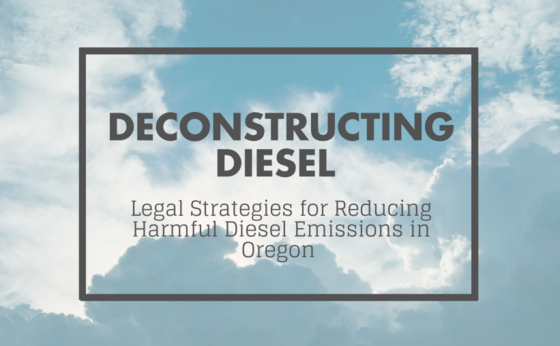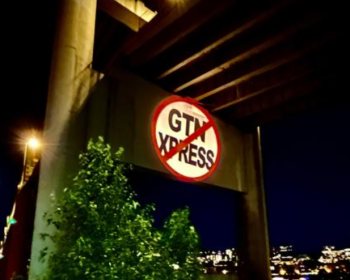Deconstructing Diesel: A Diesel Reduction Roadmap for the Portland Metro Area
Open gallery

You may have noticed the haze hanging over Portland this summer. Though this reduced visibility was caused by regional wildfires, it exacerbated already existing air quality concerns related to elevated particulate matter pollution in the Portland metropolitan area. According to a 2011 report by the federal Environmental Protection Agency, Clackamas, Multnomah and Washington counties rank in the top 5 percent of all counties nationwide for ambient concentrations of diesel particulate matter, toxic particles released from diesel engines. And a 2015 Oregon Department of Environmental Quality report estimated that these harmful emissions cause up to 460 prematures deaths each year and cost the state more than $3 billion annually.
Over the past year, GEI has taken a deep dive into the legal and policy strategies local governments can pursue to reduce diesel emissions in the Portland metropolitan area. Compared to other areas in Oregon, the Portland region has the highest risk to the population from air toxics due to business and population density, and Portland monitoring studies have confirmed the presence of air toxics at levels that can cause adverse health effects, particularly along major transit corridors. The transportation sector also accounts for 40 percent of greenhouse gas emissions in Multnomah County. Therefore, significant reductions in transportation-related emissions are essential to achieving the city’s and county’s climate protection goals.
This Fall, GEI will release a comprehensive diesel pollution reduction roadmap that will provide an overview of Portland’s diesel emissions problem and a description of the often-complex legal frameworks and jurisdictional dynamics affecting state and local regulation of motor vehicle emissions. Our analysis will recommend a variety of strategies local governments should pursue to address diesel emissions from on-road, nonroad, and indirect sources (such as ports, rail yards, and construction sites). Stay tuned for the release of our report, as well as for opportunities to hear directly from our staff on these issues.
More Green Energy Institute Stories
Green Energy is located in Wood Hall on the Law Campus.
email gei@lclark.edu
Director
Carra Sahler
Green Energy
Lewis & Clark Law School
10101 S. Terwilliger Boulevard MSC
Portland OR 97219

